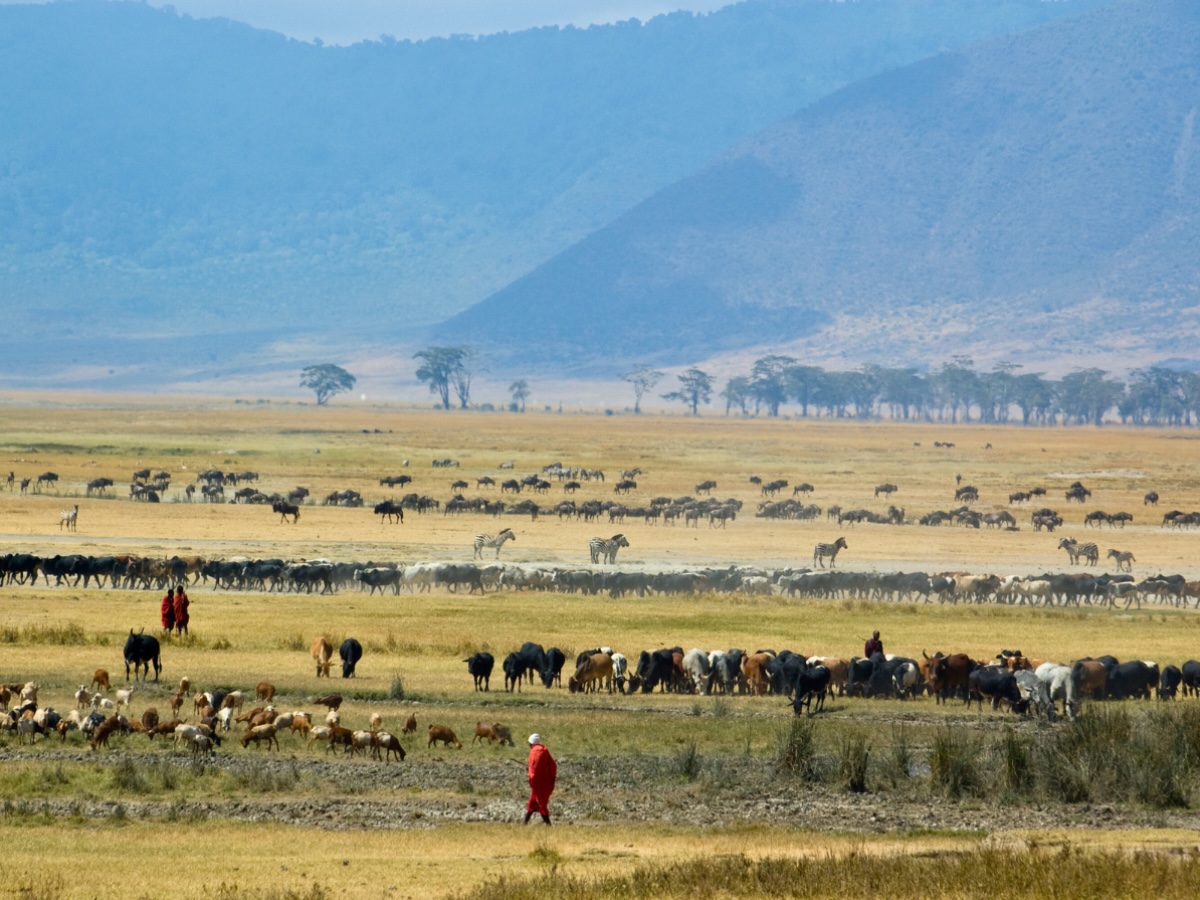
The Ngorongoro Crater, an extinct volcanic caldera nestled in Northern Tanzania’s Eastern Rift Valley, stands as Africa’s largest unbroken volcanic crater. Recognized by UNESCO as a World Heritage Site, Ngorongoro hosts the annual migration of wildebeests and promises encounters with the Big 5.
Join us on an exhilarating journey through the majestic Ngorongoro Crater, where geological marvels and thriving wildlife create an unparalleled African Safari experience.
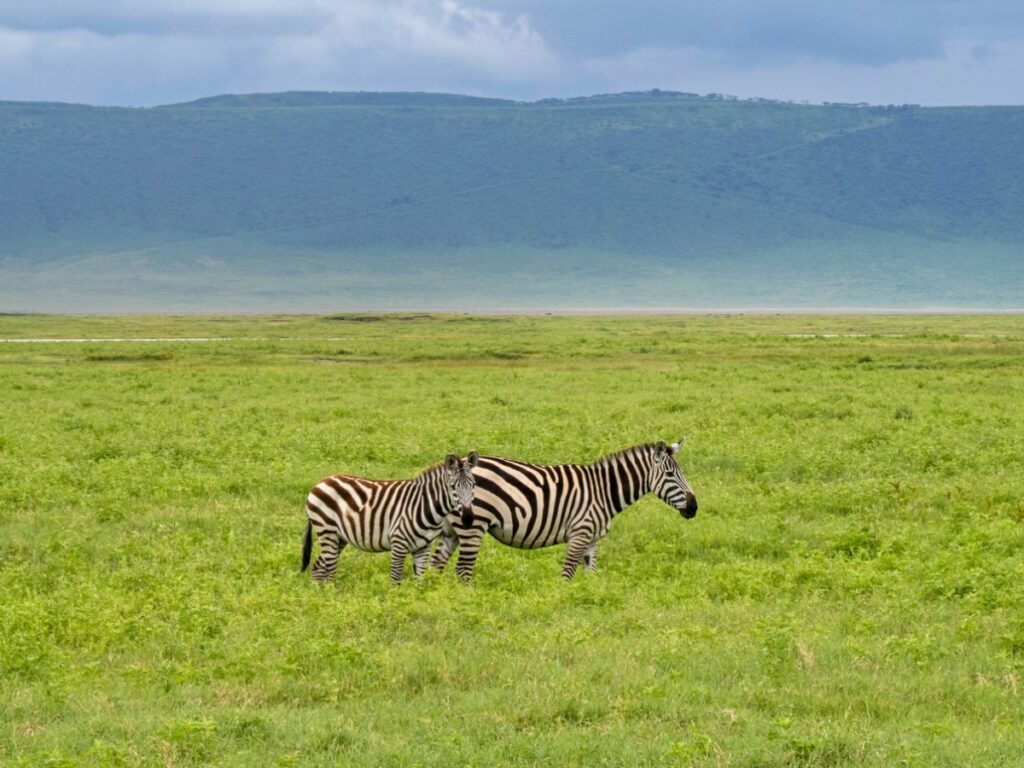
Ngorongoro Crater was created two to three million years ago when a large volcano exploded and collapsed into itself, creating a breathtaking natural amphitheater. It now stands as a unique protected area in Africa, covering 100 sq. m (260 sq. km) with walls plunging 2,000 ft (610 m) high. The crater’s geological magnificence makes its place among the top natural marvels worldwide.
In the past, the Ngorongoro area was part of the larger Serengeti ecosystem, sharing its wildlife, landscapes, and ecological connections. Now, it is designated as an independent conservation area, specifically to protect its distinct attributes like the Ngorongoro Crater.
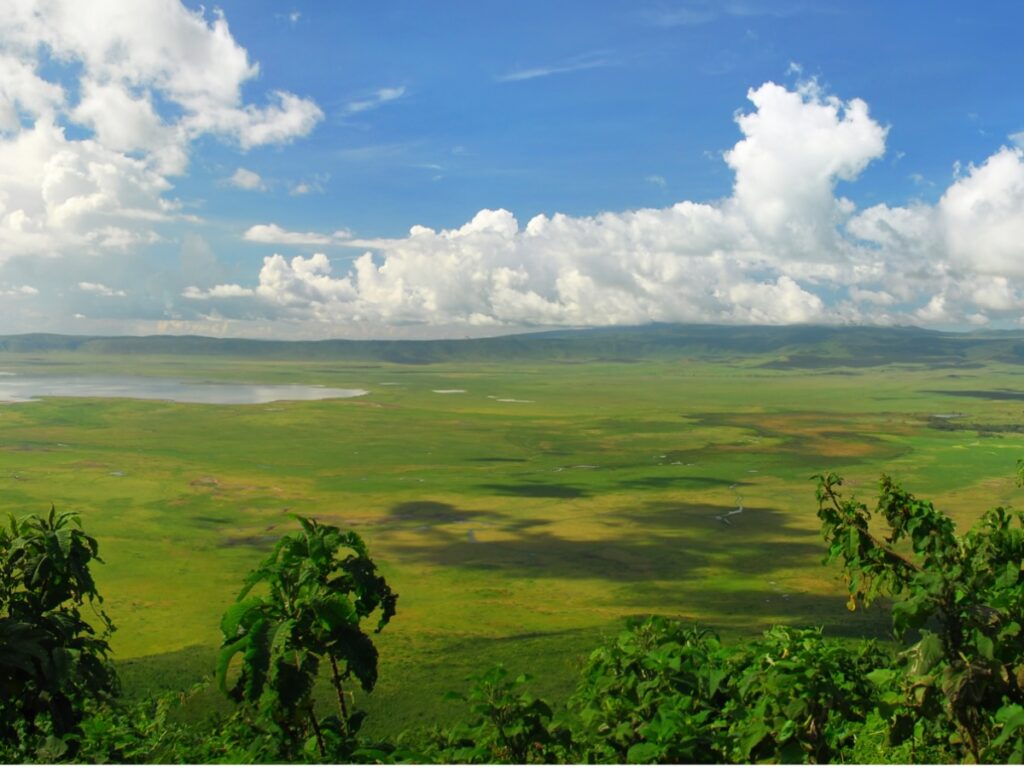
The panoramic vistas from the Ngorongoro crater’s rim are awe-inspiring. Step to the edge of the rim and capture the picturesque vast expanse with ethereal blue-green vistas. The crater’s terrain is diverse and teeming with life, from lush, verdant grasslands to freshwater lakes. At the heart lies the crater floor—a flat, open expanse home to a rich mosaic of habitats. The land is undulated with gentle slopes, punctuated by patches of dense vegetation and open plains.
Find Lake Makat (Soda Lake) amid this wonder, serving as an essential lifeline for the diverse wildlife that roams freely within this natural amphitheater. Collectively, these elements make one of the planet’s most exquisite wildlife sanctuaries—a place often hailed as the ‘Africa’s Garden of Eden.’
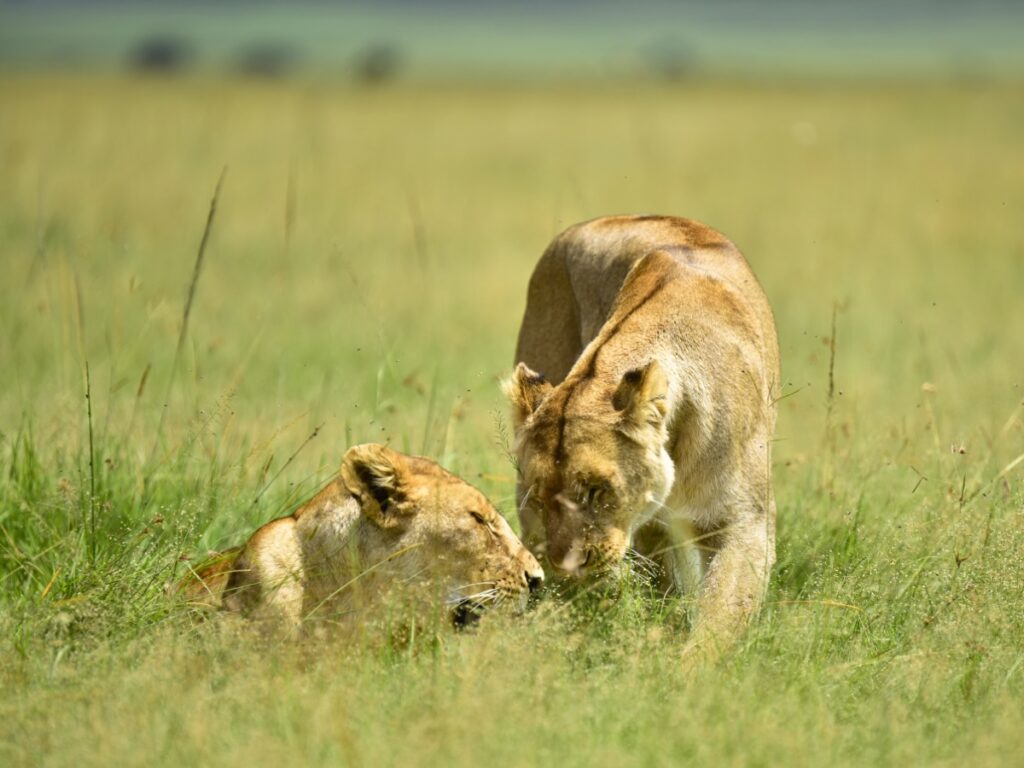
Embark on a game drive in the renowned Ngorongoro Crater for an unforgettable African Safari adventure. Do not miss the rare chance to witness the black rhinos and majestic African Tuskers—old bull elephants with tusks nearly touching the ground. They are seldom seen elsewhere due to their poaching. The mineral-rich volcanic soil and the short-grass plains grow lush on the Crater’s floor, providing nutritious grazing for many herbivores.
Encounter the renowned Big Five—lions, elephants, buffaloes, leopards, and rhinoceros—roaming freely in their natural habitat. Ngorongoro Crater is home to over 60 lions and a prime destination for lion pride sightings. Observe their behavior in this unique ecosystem as they adapt to the challenges and opportunities of the crater’s enclosed environment.
Did you know that among the 25,000 mammals thriving inside the Crater, the notable absentees are giraffes? Their absence is attributed to the scarcity of open woodlands and specific tree species they favor.
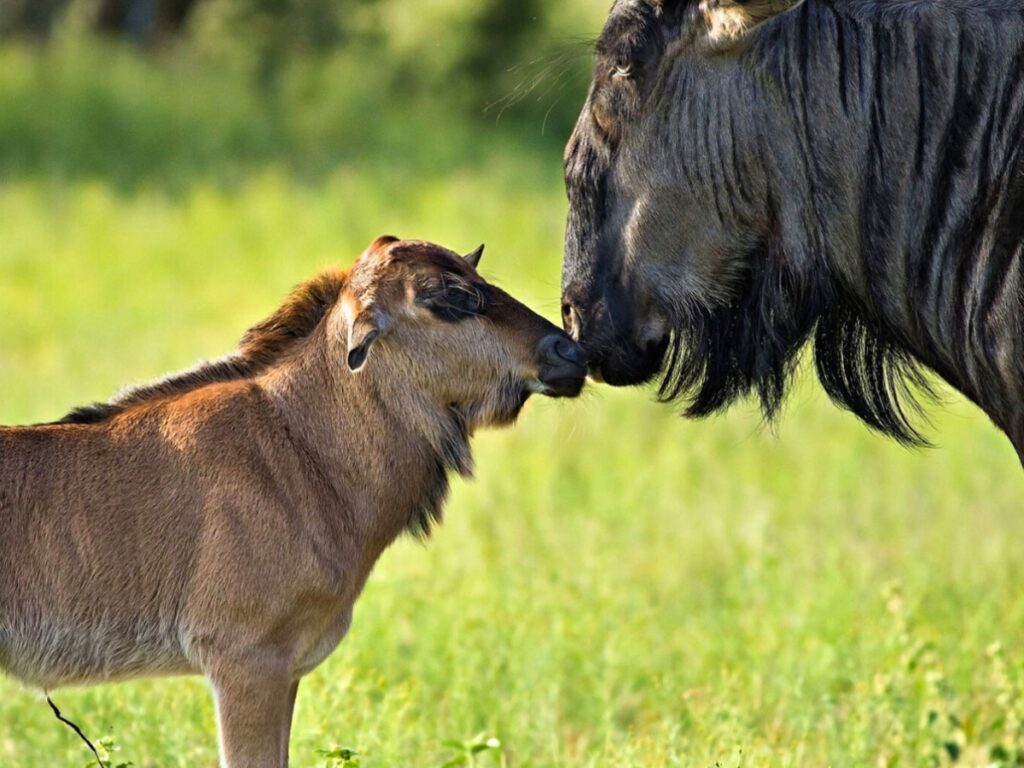
Set on a game drive to Ngorongoro Crater, a stage for nature’s most breathtaking spectacles: Wildebeest Migration. From February to March, witness herds journey from the Serengeti National Park to the Ndutu area, where the fertile lands offer a haven for the wildebeest to give birth. Over 1,000 calves are born each day of the season, painting the landscape with new life. This migration offers a glimpse into nature’s raw beauty in Ngorongoro Crater – a rare and unforgettable encounter on your safari adventure.
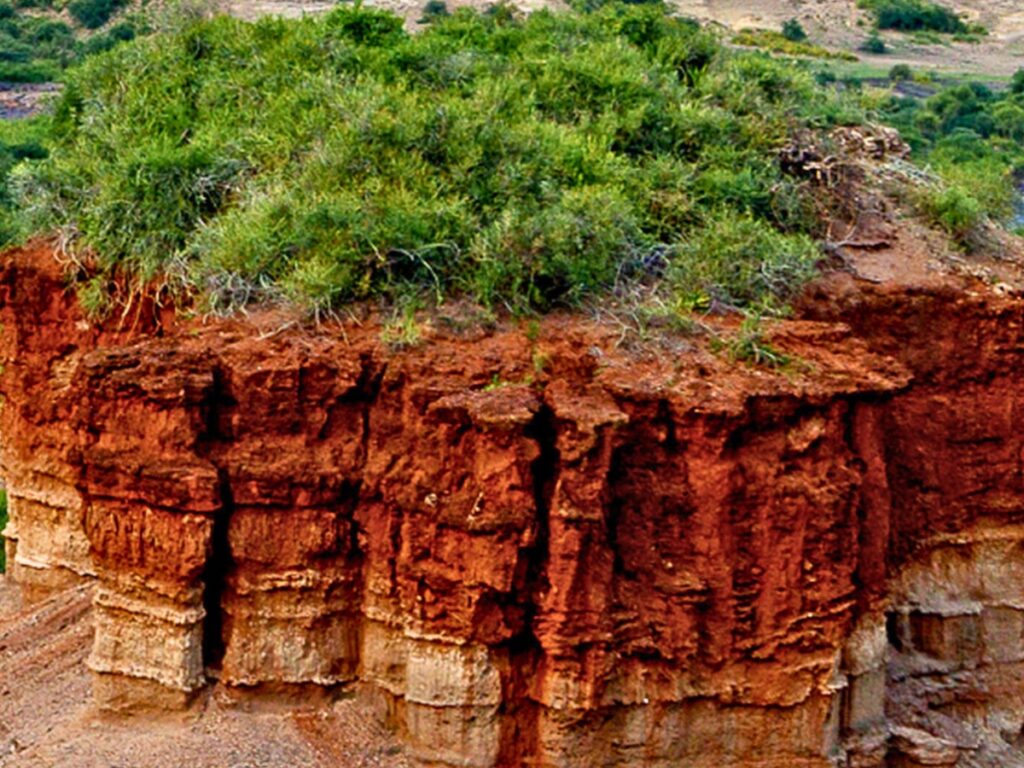
Explore Olduvai Gorge, situated approximately 50 km (1.609344 km/m). west of Ngorongoro Crater. Hailed as the “Cradle of Mankind,” archaeological discoveries of fossils dating back 3.6 million years, tools, and artifacts have provided vital insights into the early stages of human evolution. Visit the Olduvai Museum, which displays replicas of ancient fossils, including the renowned Laetoli footprints and fossils of extinct animals, advocating the prehistoric era.
Venture on an unforgettable journey with One Nature African Safari Lodge to the iconic Ngorongoro Crater—an adventure to one of the world’s Seven Natural Wonders, where wildlife thrives within a stunning volcanic caldera. Explore the Ngorongoro Conservation Area aboard a custom-designed semi-closed safari vehicle, ensuring comfort throughout your journey. Accompanied by seasoned guides, explore the habitat, behaviors, and conservation efforts surrounding these magnificent creatures.
Indulge in a delicious, packed lunch at a picturesque picnic set amidst the wonders of the Ngorongoro Crater. Allow yourself to savor every bite surrounded by the breathtaking beauty of this natural spectacle.